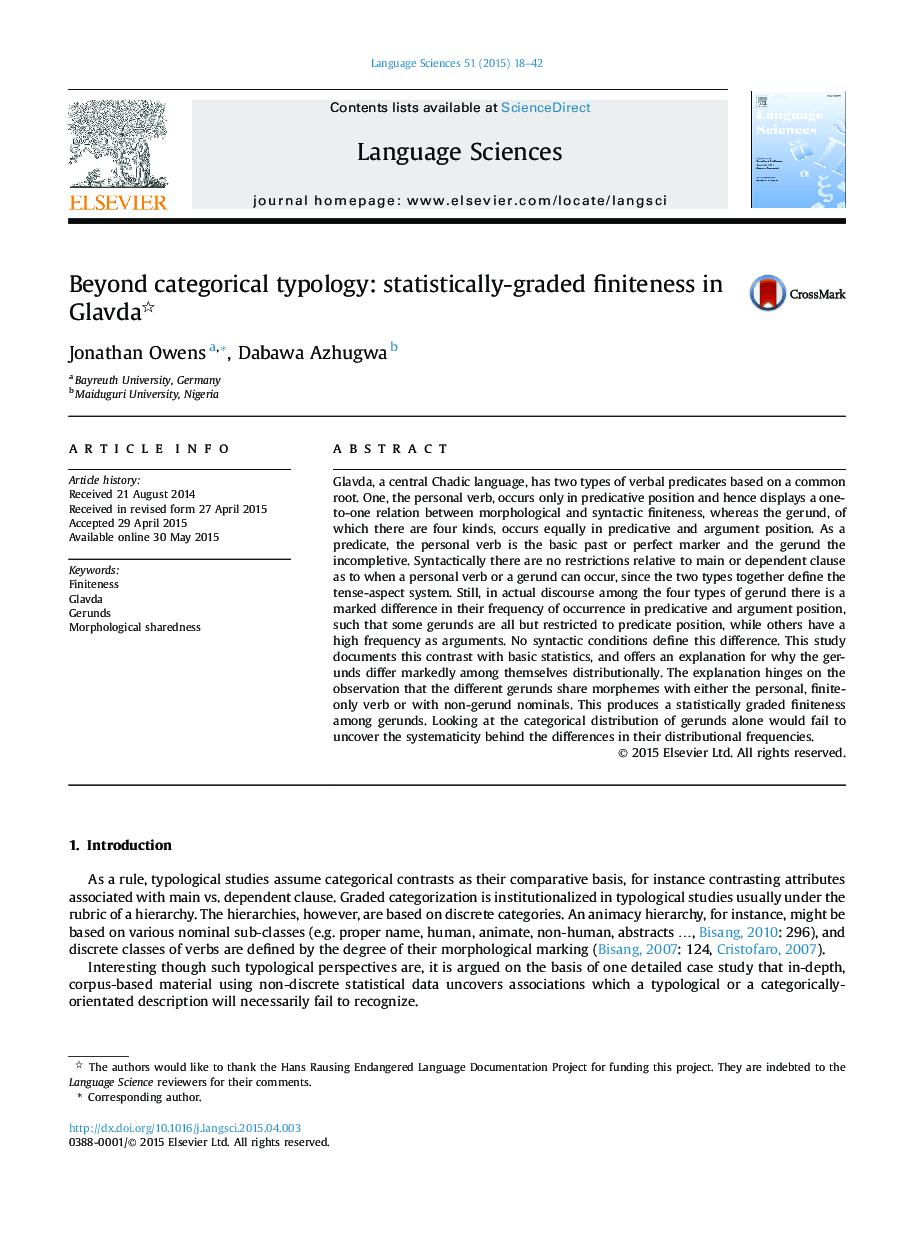| Article ID | Journal | Published Year | Pages | File Type |
|---|---|---|---|---|
| 1103044 | Language Sciences | 2015 | 25 Pages |
•Glavda: Afro-Asiatic, Central Chadic, A4 group, NE Nigeria; about 20,000 speakers.•Two types of verbal predicate: finite and gerunds in four types•Finite predicates occur only as predicate; gerunds as predicate and argument.•Four gerunds differ in degree to which they occur as predicate; 64.5%–92.7%.•Degree of morpheme sharedness determines predicative differences among gerunds.•Statistical treatment reveals interacting factors categorical comparison can't show.
Glavda, a central Chadic language, has two types of verbal predicates based on a common root. One, the personal verb, occurs only in predicative position and hence displays a one-to-one relation between morphological and syntactic finiteness, whereas the gerund, of which there are four kinds, occurs equally in predicative and argument position. As a predicate, the personal verb is the basic past or perfect marker and the gerund the incompletive. Syntactically there are no restrictions relative to main or dependent clause as to when a personal verb or a gerund can occur, since the two types together define the tense-aspect system. Still, in actual discourse among the four types of gerund there is a marked difference in their frequency of occurrence in predicative and argument position, such that some gerunds are all but restricted to predicate position, while others have a high frequency as arguments. No syntactic conditions define this difference. This study documents this contrast with basic statistics, and offers an explanation for why the gerunds differ markedly among themselves distributionally. The explanation hinges on the observation that the different gerunds share morphemes with either the personal, finite-only verb or with non-gerund nominals. This produces a statistically graded finiteness among gerunds. Looking at the categorical distribution of gerunds alone would fail to uncover the systematicity behind the differences in their distributional frequencies.
